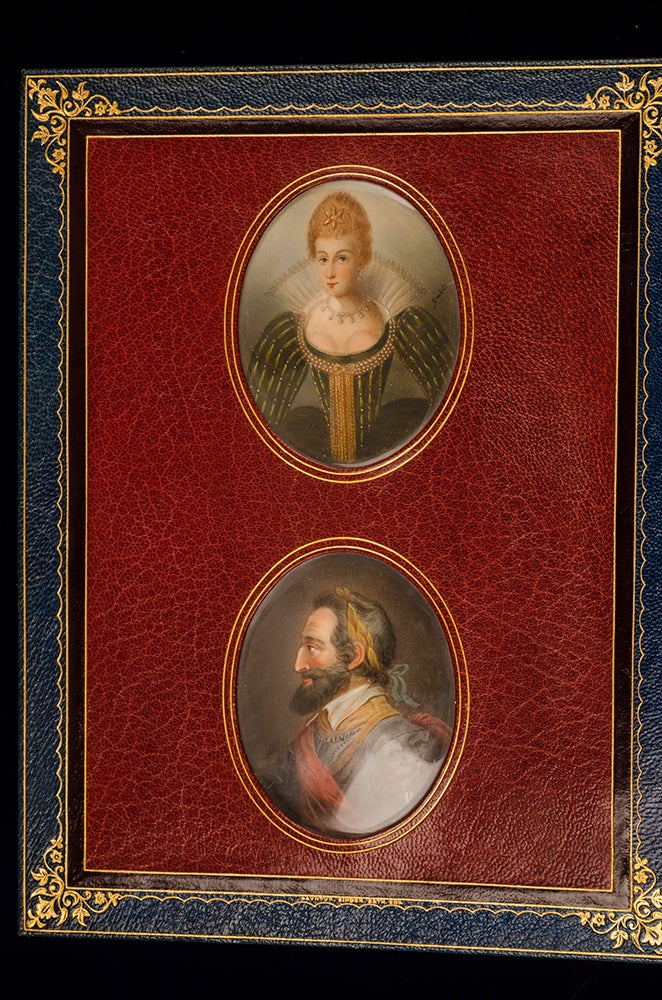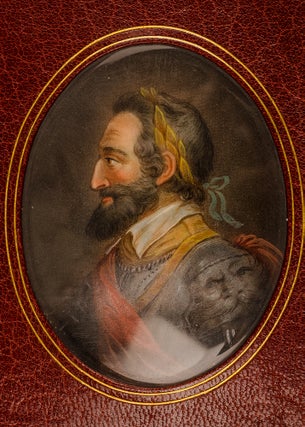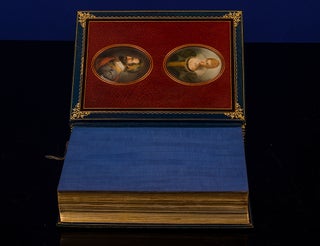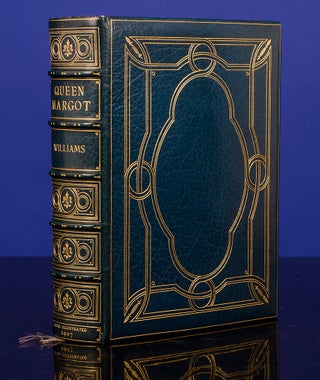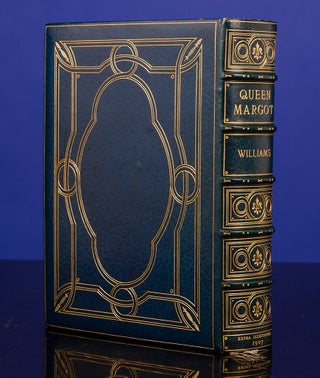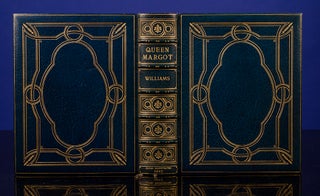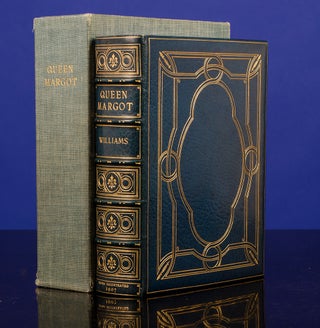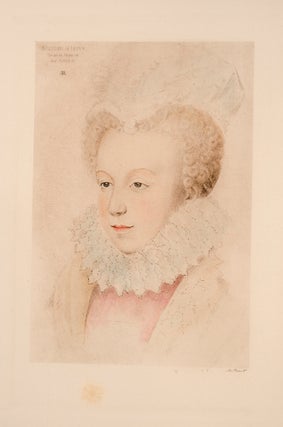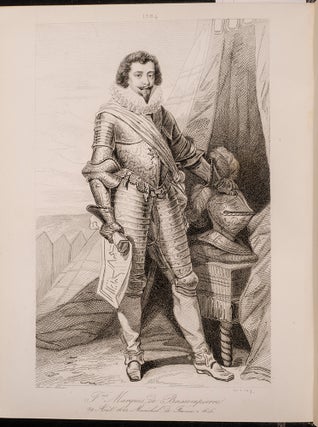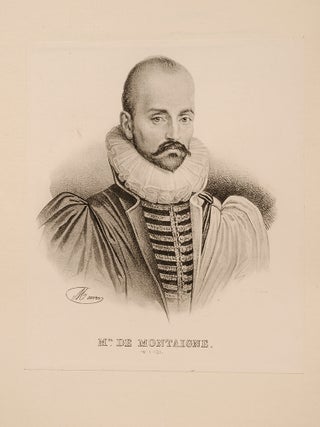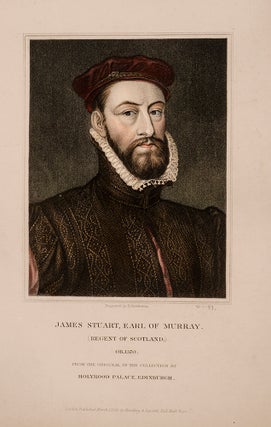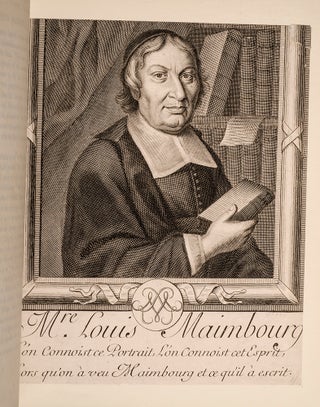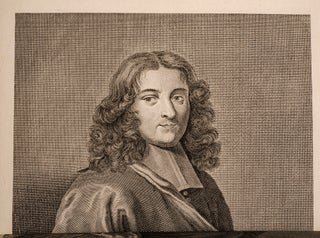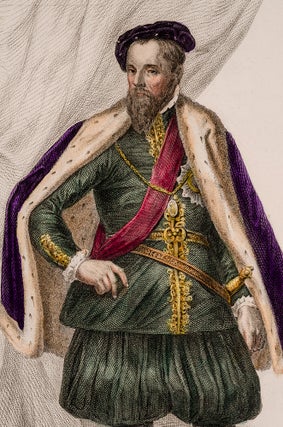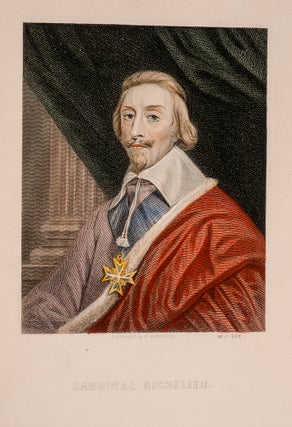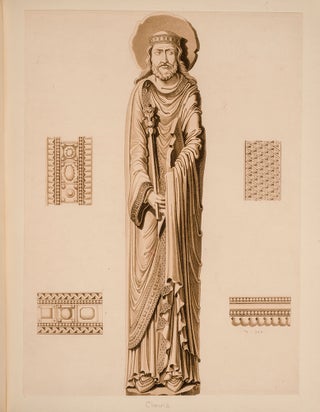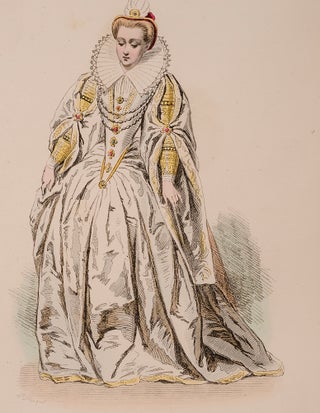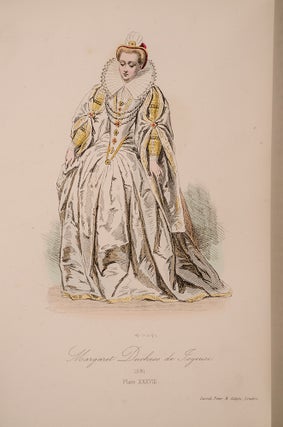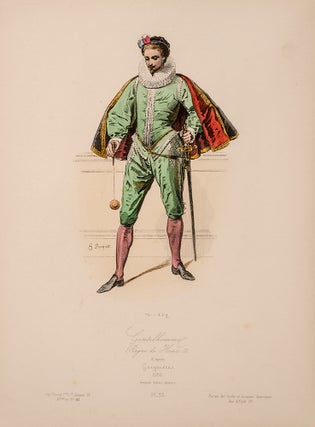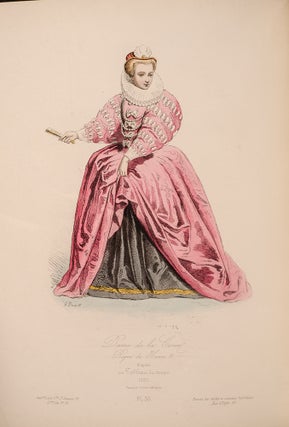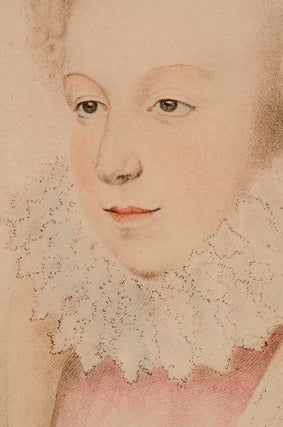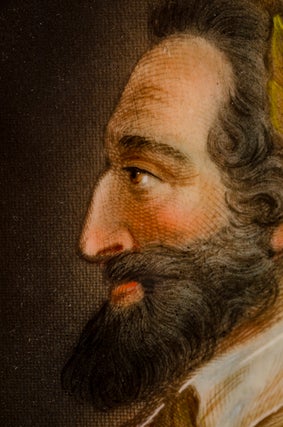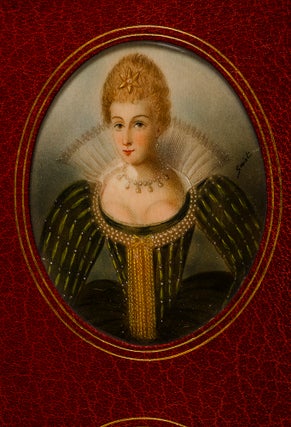Queen Margot Wife of Henry of Navarre
London and New York: Harper & Brothers, 1907. Item #04479
A Superb Mid-Twenties Cosway-Style Binding by Bayntun of Bath with Two Fine Oval Miniatures
Extra-Illustrated by the Insertion of Twenty-Five Engraved Plates of which Six are Hand-Colored
COSWAY-STYLE BINDING. BAYNTUN, binder. WILLIAMS, H. Noel. Queen Margot Wife of Henry of Navarre. With sixteen illustrations in photogravure. London and New York: Harper & Brothers, 1907.
Quarto (9 3/8 x 7 3/8 inches; 238 x 188 mm.). xviii, 409, [1, blank] pp. Colored frontispiece and nineteen photogravure plates with tissues printed in red & brown. Extra-illustrated by the insertion of twenty-five engraved plates of which six are hand-colored.
Bound ca. 1925 by Bayntun, stamp-signed in gilt "Bayntun. Binder. Bath. Eng." on front turn-in. Full dark blue crushed levant morocco over beveled boards, covers with elaborate gilt frames, spine with five raised bands, elaborately decorated and lettered in gilt in compartments, gilt ruled board edges, wide elaborate gilt turn-ins, all edges gilt. Front doublure of red morocco surrounded by a frame of inlaid maroon morocco. Set into the front doublure are two very fine oval miniature paintings set under beveled glass within a double gilt frame. The upper miniature is of Margaret de Valois, Queen Margot of Navarre. The lower miniature is of her spouse Henry III of Navarre (later Henry IV of France). Both miniatures measure 3 3/16 x 2 1/2 inches; 81 x 63 mm. The rear doublure is of red morocco surrounded by a frame of inlaid maroon morocco. Blue watered silk end-leaves. A very fine example housed in its original felt-lined blue cloth clamshell case.
Margaret of Valois (1553-1615) was a French Princess of the Valois dynasty who became Queen Consort of Navarre and later also of France. By her marriage to Henry III of Navarre (later Henry IV of France), she was Queen of Navarre and then France at her husband's 1589 accession to the latter throne. Their marriage was annulled in 1599 by decision of the Pope. She was the daughter of King Henry II of France and Catherine de' Medici and the sister of Kings Francis II, Charles IX and Henry III. Her marriage, which was to celebrate the reconciliation of Catholics and Huguenots, was tarnished by the St. Bartholomew's Day massacre, and the resumption of the religious troubles which ensued. In the conflict between Henry III and the Malcontents, she took the side of Francis, Duke of Anjou, her younger brother, and this caused a deep aversion of the King against her. As Queen of Navarre, she also played a pacifying role in the stormy relations between her husband and the French Monarchy. Shuttled back and forth between the two courts, she endeavored to lead a happy conjugal life, but her sterility and the political tensions inherent in the French Wars of Religion caused the end of her marriage. Mistreated by a brother quick to take offence and rejected by a fickle and opportunistic husband, she chose the path of opposition in 1585. She took the side of the Catholic League and was forced to live in Auvergne in an exile which lasted twenty years.
Price: $9,500.00

 I have been in the rare and antiquarian book business for over forty years; my family has been in the rare books business since 1876. Rare books are in my blood.
I have been in the rare and antiquarian book business for over forty years; my family has been in the rare books business since 1876. Rare books are in my blood.
